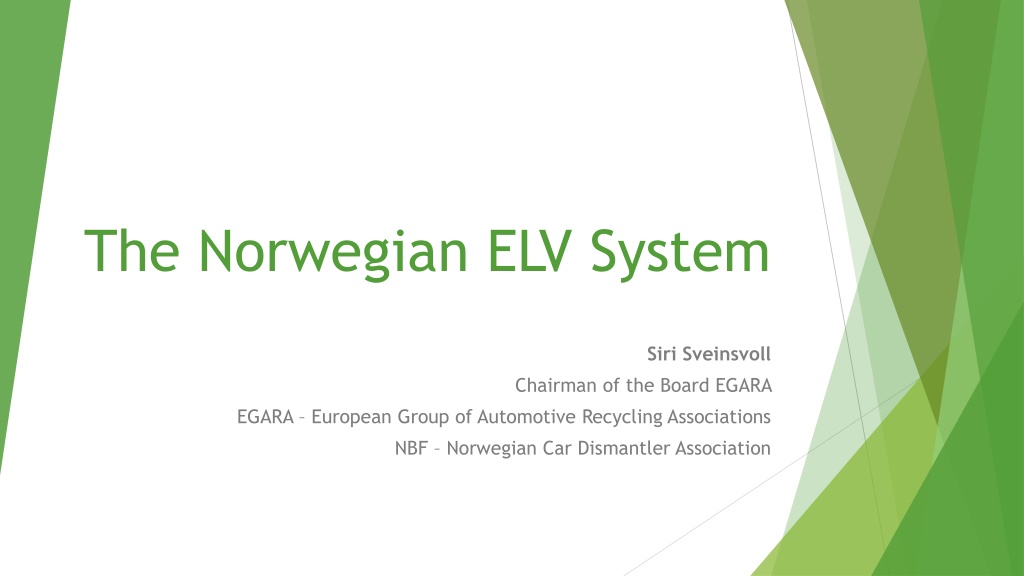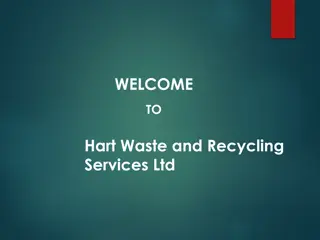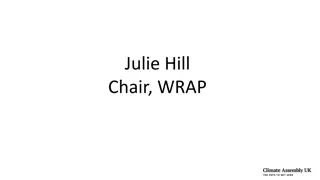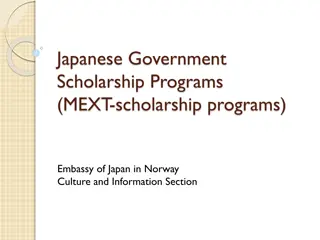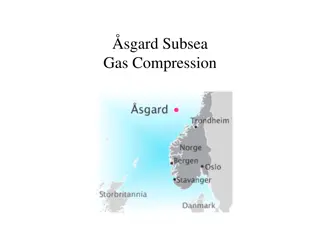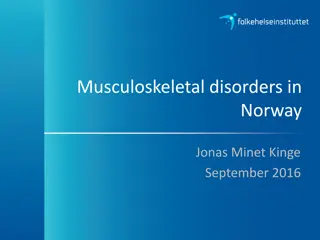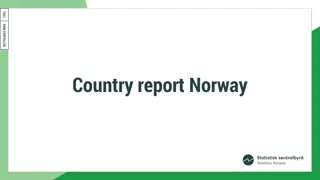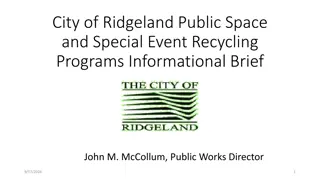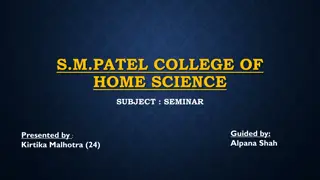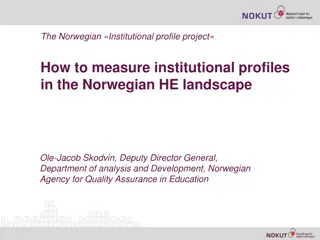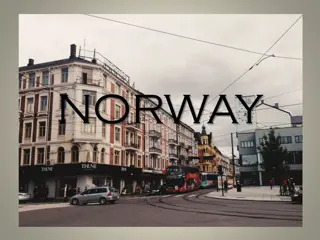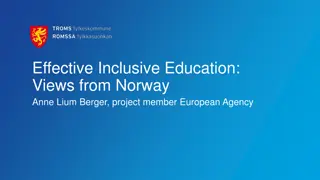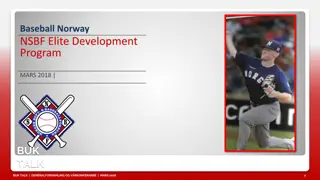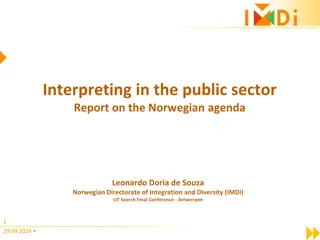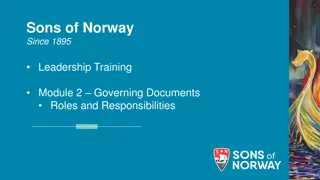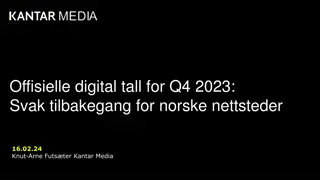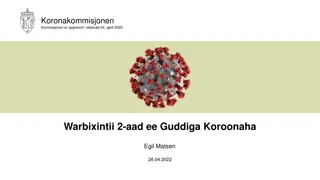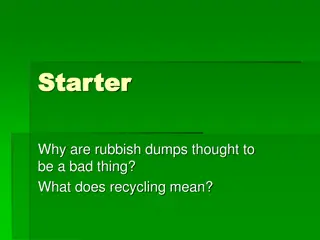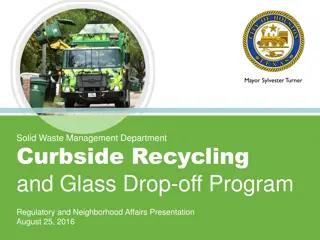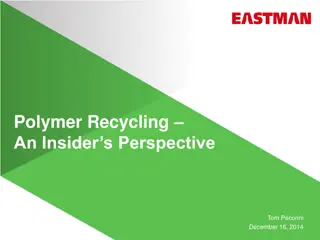Overview of the Norwegian ELV System and Automotive Recycling in Norway
The Norwegian ELV System, overseen by Siri Sveinsvoll and EGARA, ensures responsible car recycling in Norway. With authorized treatment facilities (ATFs) and a collection scrap deposit system, Norway's approach includes financial incentives for car owners. The system integrates various government departments to enforce recycling laws effectively.
Uploaded on Oct 02, 2024 | 0 Views
Download Presentation

Please find below an Image/Link to download the presentation.
The content on the website is provided AS IS for your information and personal use only. It may not be sold, licensed, or shared on other websites without obtaining consent from the author. Download presentation by click this link. If you encounter any issues during the download, it is possible that the publisher has removed the file from their server.
E N D
Presentation Transcript
The Norwegian ELV System Siri Sveinsvoll Chairman of the Board EGARA EGARA European Group of Automotive Recycling Associations NBF Norwegian Car Dismantler Association
Facts About Norway Inhabitants 5,4 millions Distance North ot South 2300 km Land Area 385 170km2 Cars in Traffic 2 720 000 ELVs 155 000 Collection Rate 93 % Age of Car Fleet 10,5 year Average age ELVs 18,7 year
Autorized Treatment Facililies - ATFs The County Governor s department for Climate and the Environment autorizes car dismantlers. The County Governor is the chief representative of the King and Government, and work to ensure that decisions of the Storting (Parliament) and Government are implemented correctly. An autorized car dismantler, ATF, gets permisson to receive ELVs. In addition to getting permission, the autorization give the ATFs an obligation to receive ELV (free of charge from last owner). ATF get access to the Tax Authorities web based Certificate of Destruction program (Vraksys), and is obliged to issue a CoD for all ELV received. The County Governor s department for Climate and the Environment enforces the law and inspect the car dismantlers both unannounced and announced on a regular basis.
Two Parallel Financial Systems COLLECTION Scrap Desposit System => An incentive system to secure that the cars ends up at the Autroized Treatment Facilities (ATFs). A state-run system, administrered by the Tax Authorities TREATMENT A financial risk sharing system to secure a minimum payment to the ATFs. Contractual agreement between the car importers and the ATFs.
C O L L E C T I O N Deposit System Scrap Deposit System was implemented in Norway in 1978 Intention was an incentive for the last owner to deliver the ELV to a ATF The payment goes in full to last owner. Direct bank transfer direct from the Norwegian Tax Administration to the owner.
Based on the CoD Deposit NOK 3000.-( 315.-) Direct to the last owner. First time registration Fee NOK 2400.- ( 250) ELV is handed in to a ATF. A CoD is issued.
The Norwegian Public Roads Administration *Motor Vechicle Registry* *Roadworthiness Test* Norwegian Motor Insurers Bureau *Motor Insurance Tax * (former Road Tax) The Norwegian Tax Administration *Certificate of Destruction* These 3 systems are all automatically integrated
T R E A T M E N T Payment for Treatment a Brief Historic Overview 1978 2006 ATFs was paid by the Norwegian government for depollution and treatment of the ELVs. Predictably and low risk for the ATFs. 2007 transition from state-run system to producer responsibility, and the car importer s organisation, took over. Difficult time. The system was about to break down.
Producer Responsibility Founded September 2002 Operative responsibility for collection and recycling as from January 2007 100% owned by BIL (The Norwegian Automobile Importers Association) Non-profit organisation
Producer Responsibility Organisational Structure Autoretur Main Operator Norsk Gjenvinning Main Operator Bilretur Main Operator Bilgjenvinning ATFs ATFs ATFs ATFs ATFs ATFs Schredders Schredders Schredders
Financial Risk Sharing Agreement Negotiation with car importers for a financial agreement. Top Over Ceiling 2 => Scrap price above this level goes in full to ATFs 2009 long term financial risk sharing agreement agreed upon. ATFs 100% Corridor Model: Lower limit scrap price Ceiling 1 Ceiling 2 Topp level Between Ceiling 1 and Ceiling 2 => Scrap price between Ceiling 1 and 2; 50% of the difference is paid from ATFs to Autoretur 50/50% Ceiling 1 => Scrap price between Lower Limit and Ceiling 1 goes in full to ATFs Neutral zone Transportation payment To the nearest shredder due to challinging transportation conditions in Norway, long distances and little volum. Lower Limit When scrap price goes below this level Autoretur pays the difference Difference Autoretur 100%
Reporting The Norwegian Public Roads Administration Wreck reporting (CoD) ATFs Autosys (public register) Vraksys (public register) Norwegian Motor Insurers Bureau The Norwegian Tax Admin. Approval of wreck reported by shredders. Non-hazardous and hazardous waste New & usedimported vehicles. Changes in total Collected vehicles OFV (database supplier) Weight and no. per load wrecks received and processed Shredders AutoStat (web-based) A cooperation project Maintenance and reports Main operators and Autoretur
Thank you! The first ever 100% Recyclable Car!
